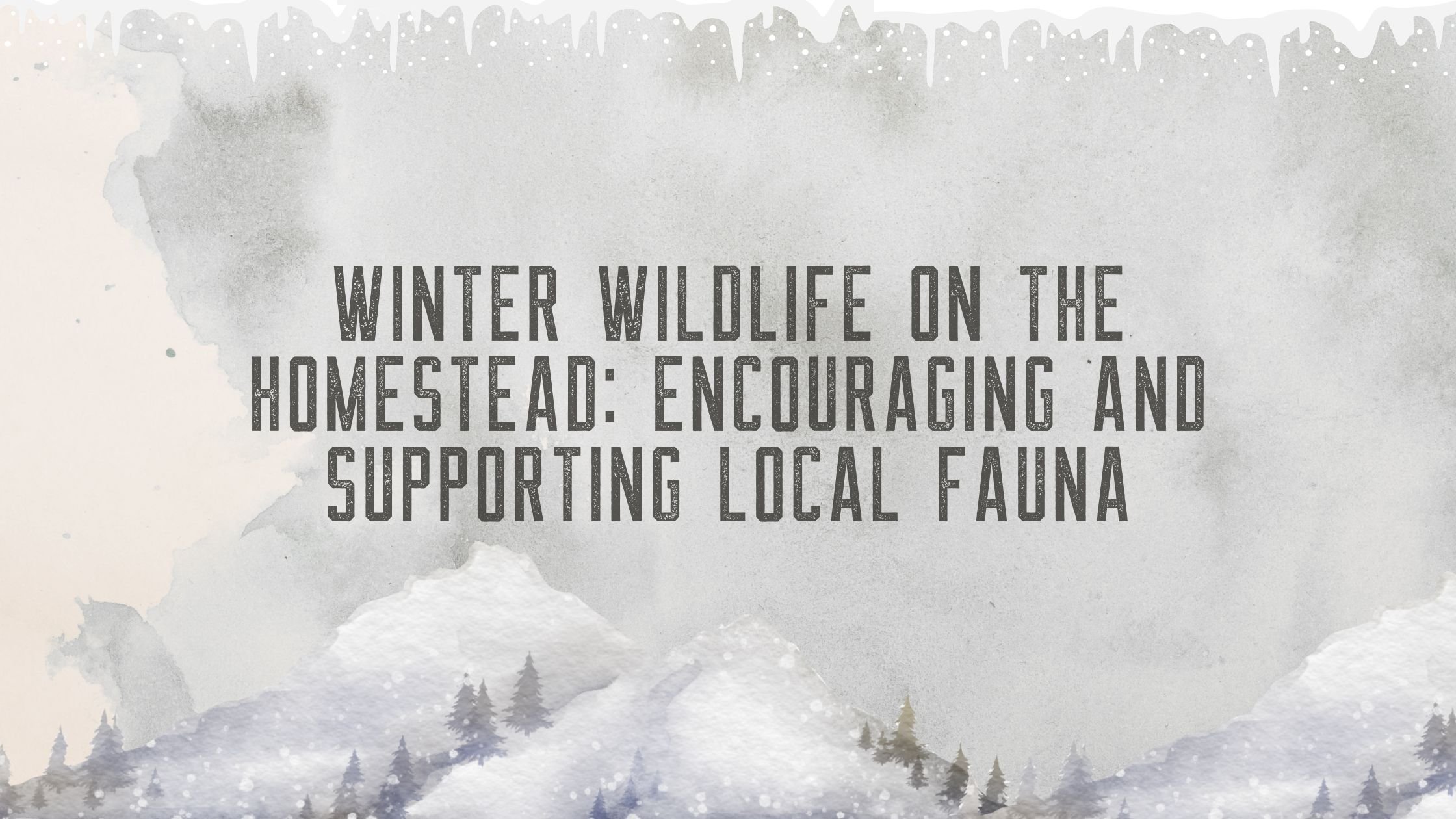Winter Wildlife on the Homestead: Encouraging and Supporting Local Fauna
Winter is a magical time on the homestead. The landscape transforms into a snowy wonderland, and the air is crisp with the promise of cozy nights by the fire. While humans bundle up indoors, local wildlife faces unique challenges during the cold months. As a homesteader, there's a lot you can do to encourage and support the vibrant fauna around you, turning your homestead into a haven for wildlife even during winter.
Creating a Winter Refuge: Shelter for Critters Big and Small
One of the critical elements in supporting winter wildlife is providing shelter. Consider leaving some areas of your homestead untamed, allowing wild grasses and plants to stand tall. These areas become natural shelters for small mammals, birds, and insects. Install birdhouses or build brush piles to give birds and other creatures a place to roost and seek refuge from the biting cold.
For larger animals like deer or rabbits, strategically placing piles of leaves or straw can create cozy spots where they can nestle for warmth. Even old tree stumps or fallen logs can become makeshift homes for various critters seeking shelter from the winter winds.
The Feast of Winter: Crafting Wildlife-Friendly Buffets
When the ground is covered in snow, finding food can be a real challenge for wildlife. Help out your furry and feathered friends by setting up a winter buffet. Bird feeders filled with high-energy seeds, such as sunflower seeds, can attract a variety of birds, like cardinals, chickadees, and finches.
Consider planting shrubs and trees that produce berries or nuts, providing a natural food source for birds and small mammals. Not only does this add to the beauty of your homestead, but it also ensures that wildlife has access to nourishing meals throughout the winter.
Hydration Stations: Fresh Water for All
People often forget that wildlife needs water during the winter just as much as during the warmer months. If you have a pond or stream on your homestead, try to keep a portion of it free from ice. This small opening can be a lifeline for thirsty animals.
For those without a natural water source, placing shallow bowls of fresh water in different areas can attract a variety of animals. Remember to check and refill them regularly, as they can freeze over quickly in the winter chill.
Winter Wildlife Watching: Setting Up Observation Stations
Winter is an excellent time for wildlife observation. Create cozy spots with comfortable seating near your feeding stations or natural wildlife habitats. Equip these spots with binoculars, bird identification guides, and a thermos of hot cocoa to make it an enjoyable experience for yourself as well.
Install trail cameras to capture the nocturnal activities of local wildlife. You might be surprised at the variety of visitors that come through your homestead when you're not looking. It's like having your own personal nature documentary right outside your window.
Understanding Hibernation and Migration: Respecting Natural Cycles
Winter is a time of hibernation and migration for many animals. While you might not see certain species during the winter, it's crucial to respect these natural cycles. Resist the temptation to disturb hibernating creatures or disrupt migration routes. Provide safe pathways for animals to move through your homestead undisturbed.
Research the specific needs of local wildlife during winter and tailor your efforts accordingly. Some species, like squirrels, might appreciate extra food, while others, like bats, benefit from having safe places to roost.
Winter Gardens: A Haven for Insects and Butterflies
Believe it or not, winter is not devoid of insect life. Encourage beneficial insects and butterflies by leaving a section of your garden untouched. Many insects overwinter in plant debris or hollow plant stems. Preserving these areas creates safe spaces for these pollinators to thrive come spring.
Consider planting winter-blooming flowers like witch hazel or snowdrops, providing nectar for any winter-active bees or butterflies. A thriving insect population supports the entire ecosystem and keeps your homestead in balance.
Educating and Involving the Family: Instilling a Love for Wildlife
Winter on the homestead is an excellent opportunity to involve the whole family in wildlife care. Educate children about the different species that visit your homestead and teach them the importance of providing for wildlife during the winter.
Consider starting a wildlife journal where family members can record their observations. This not only fosters a connection with nature but also provides valuable insights into the changing patterns of local wildlife throughout the seasons.
Community Collaboration: Extending Wildlife Support Beyond Your Homestead
Collaborate with neighbors and fellow homesteaders to create a network of wildlife-friendly spaces. Share tips and experiences, and collectively work towards enhancing the environment for local fauna. Consider organizing community workshops or events to raise awareness about the importance of supporting wildlife during the winter months.
By working together, you can create a network of interconnected habitats that benefit a wide range of species. Plus, it's an excellent way to build a sense of community among like-minded individuals who share a passion for the well-being of local wildlife.
Documenting Winter Wildlife Tales: Sharing Your Homestead Stories
Finally, share your winter wildlife adventures with the world! Start a blog or social media account dedicated to documenting the diverse array of wildlife that graces your homestead during the winter. Share anecdotes, photos, and tips with your online community, inspiring others to create wildlife-friendly environments on their homesteads.
Remember, every small effort you make on your homestead contributes to the larger tapestry of biodiversity. As winter wraps its icy fingers around your homestead, let it also be a season of warmth and abundance for the incredible wildlife that calls your land home. By fostering a symbiotic relationship with nature, you turn your homestead into a haven where both humans and wildlife can thrive in harmony. Happy homesteading!

